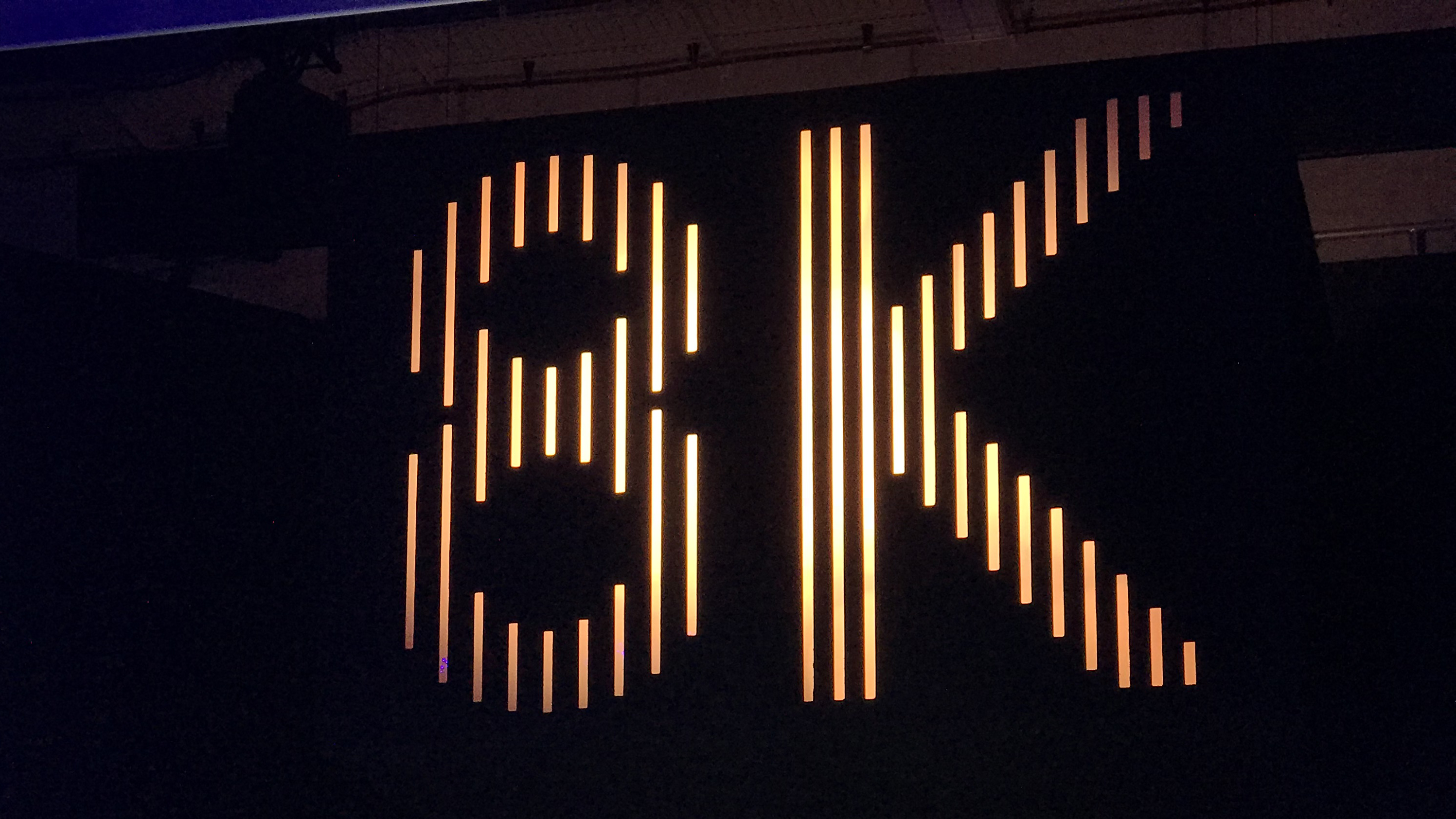Best TVs of IFA 2018: the top sets unveiled by Samsung, Philips, LG and Toshiba
Displays that dazzled in Berlin

In much the same way as they take centre stage in our living rooms, TVs remain the big draw at IFA in Berlin, Europe’s largest consumer tech show. Having burnt out his retinas casting judgment over the hundreds of goggle boxes unveiled at this year’s show, Kevin Lynch takes us through his pick of the new displays.
Samsung 8K Q900R QLED
In terms of TVs, the big talking point at IFA 2018 has very much been whether 8K is the format of the future or the present.
Despite the glaring absence of native content in the format, or the fact that most folk are just coming to terms with adopting 4K into their homes, Samsung unequivocally came out all guns blazing for 7680×4320 resolution – four times that of UltraHD – with confirmation of an October release date for the 8K Q900R QLED TVs proving a standout announcement at this year’s show.
Samsung’s argument is that as the demand from consumers for ever larger screens continues apace, 85-inches of 8K can offer a similar amount of clarity to a 43-inch 4K screen. With the apparent long-term non-existence of films and shows available natively in 8K, this places a huge reliance on the quality of the TV’s upscaling ability to ensure 4K and lower resolution content doesn’t look like a blocky mess.

Samsung claim its new Quantum Processor 8K is up to the job by making use of AI and machine learning to analyse and fill in details, reduce noise and generally clean up lower resolution content, magically upgrading even standard definition pictures to look great on the super-sized screens.
On the show floor the bold claim appeared to be backed up to a large degree when up close and personal to the new range. The Q900R dazzled with native 8K test content, highlighting the sharpness and punch the higher resolution offers, but it was arguably its upscaling of lower res content that impressed the most. When fed 4K demo content, the drop in resolution appeared hard to determine, while 1080p footage remained natural and generally artefact free.
Dropping down to 720p things unsurprisingly began to look over sharpened. While we’ll need to put the Q900R range through its paces using our own test content before passing verdict on its upscaling, the early signs appear to be encouraging.
Get daily insight, inspiration and deals in your inbox
Sign up for breaking news, reviews, opinion, top tech deals, and more.
Available in 65in, 75in, 82in and 85in variants, all of the Q900R models are able to pump out a retina-melting 4000 nits of peak brightness, with the panels using direct backlighting in tandem with local dimming. While not able to provide the inky quality of an OLED screen, black levels and dark scene detailing on the QLED panels nevertheless appeared impressive on first look.
The sets will be one of the first to support HDR10+, a new high dynamic range format developed by Samsung that, like its rival Dolby Vision supports dynamic metadata, allowing for brightness boundaries to be changed on a frame-by-frame basis.
No pricing was confirmed, but with Samsung’s current 75” Q9F QLED 4K flagship TV costing £5,499 (around $7,000), you can expect the added pixel density to demand an even higher outlay.
LG 8K 88-inch OLED

Samsung’s Korean archrival LG upped the 8K states further later on Thursday by unveiling what’s set to be the first commercially available OLED TV to support the resolution during its press conference.
Recessed into a wall, it was difficult to get a sense of the set’s frame and size, but the detail and crispness was every bit as evident on LG’s 8K showstopper as Samsung’s, with the added benefit of the wider viewing angles and exceptional black levels we’ve come to expect from OLED displays.
Perhaps most impressive during the playback of a native 8K demo reel on the screen was the lack of discernible juddering or motion blur during a tracking shot of a highly-detailed cityscape.
Unlikely to hit stores until the new year, LG was also unforthcoming about the price, but having describe the set as being aimed at the ‘ultra-premium market’, expect low volumes and a price tag far in excess of its Samsung rival. It might just be the ultimate OLED experience.
Toshiba 65in 4K HDR LED

The writing may be on the wall for the humble TV remote if everyone follows Toshiba’s lead. Its new range of OLED, 4K and Full HD Smart ranges in the UK and Germany will feature Alexa voice control via a far-field microphone built into the set, doing away the need for either a remote or a separate Amazon speaker.
As well as being able to ask Alexa to change volume, channels and inputs, the new sets will be able to access Alexa’s entire skillset, meaning you can look up the weather, play music, and launch apps. There’s also integration with Amazon Dash, meaning they'll automatically order batteries for the remote control when the TV detects the current ones need replacing.
Since the Toshiba brand license was picked up a couple of years ago by Turkish electronics behemoth Vestel, its sets have been aimed squarely at the affordable mid-range market. New unveilings included a concept wall art’ TV that's just 2.5mm thick and a ‘Bazooka’ TV with a tubular built-in subwoofer and tweeter array tuned by Onkyo.
The pick of the bunch was an as-yet unnamed 65in 4K HDR LED TV with full array (as opposed to edge-lit) LED backlighting. With several independently controlled zones of LEDs, the set appeared to deliver on its promise of more consistent contrast than the commonly edge-lit TVs in its bracket. Wide support of HDR formats including HDR10, HLG and Dolby Vision should also make it a contender within its price point.
Not to be left out of the resolution revolution, Toshiba also showed off its own 8K concept TV. The 65in model boasts 7680 x 4320 output with a dedicated 8K upscaler and, unlike Samsung’s set, featured support for Dolby Vision.
Philips OLED+ 903

After a decidedly wobbly period at the start of the decade, it’s great to see Philips TV back in contention. The Dutch firm’s confident showing at this year’s IFA helped reaffirmed its place as a revitalized top tier brand – the highlight being its OLED+ 903.
A sweet collaboration with audio experts Bowers & Wilkins – it’s a sonically souped-up version of Philips’ 803 which was launched earlier this year – featuring essentially the same panel and picture processing. At the foot of the set lies a discreet array of B&W drivers that aim to improve bass as well as enhance dialog and reduce distortion.
The display itself boasts a brighter panel than the firm’s OLED offering from last year, along with Philips second-generation P5 processing engine and the three-sided Ambilight system. Elsewhere there’s support for the aforementioned HDR10+, bringing dynamic, rather than static brightness mapping.
On the downside, the set will launch with the outdated Android Nougat as its operating system. An update to Oreo is promised, however, allowing it to eventually be compatible with both Google Assistant and Amazon Alexa.
Coming in 55-inch and 65-inch models in October, the OLED+ 903 looks to be an impressive all-rounder, with a full-bodied 50-watt, audiophile output to match the set’s premium pictures, and negating the need for a soundbar.
Best of the rest

TCL 8K QLED FIBA (Basketball World Cup 2019 Edition)
Arguably the most feature-packed set of the show came from Chinese maker TCL. A 75-inch UHD 4K Quantum Dot Display TV with local dimming, like it’s Samsung counterpart it makes use of AI to upscale HD and 4K content.
The official TV, no less, of next year’s international hoop-shooting tournament, the set takes things up a notch sonically by having the display’s thin frame rest on a wedge-like integrated soundbar that’s capable of providing Dolby Atmos surround.
Elsewhere the set features Dolby Vision compatibility, while the remote features voice control, but doesn’t unfortunately support Alexa or Google Assistant. While the panel looked vibrant with its 1,000 nits output, as it was only being fed time lapse footage it was hard to get a real sense of how good it was at handling motion.
Similarly it was hard to get a grasp of how well the Atmos effect work in the cavernous show hall as the soundbar relies upon reflections off walls and ceilings. Due out later this year in China, it will make its way to the west under different branding next year.

Hisense OLED
Fellow Chinese manufacturer HiSense had one of the biggest stands at the show, but arguably its most interesting TV was one kept away from the public. Having been teased at CES back in January, the budget-friendly brand was quietly demonstrating its first-ever 4K OLED TV. Featuring an LG panel, by their rep’s own admission, the set is still in its fine-tuning stage, but they did confirm that the set is primed to go on sale in Australia before the end of the year, with a European release early in 2019.
No pricing was revealed, but with it being Hisense you can expect the set to rest in the affordable end of the market, targeting the same sort of sub £1,200/$1,500 price point as Toshiba’s entry level 55” OLED.
- IFA 2018 is Europe's biggest tech show. The TechRadar team is in Berlin to bring you all the breaking news and hands-on first impressions of new phones, watches and other tech as they're announced.
Kevin Lynch is a London-born, Dublin-based writer and journalist. The author of Steve Jobs: A Biographic Portrait, Kevin is a regular feature writer for a number of tech sites and the former Technology Editor for the Daily Mirror. He has also served as editor of GuinnessWorldRecords.com and has been a member of the judging panel for the BAFTA British Academy Video Game Awards. Alongside reviewing the latest AV gear, smartphones and computers, Kevin also specialises in music tech and can often be found putting the latest DAWs, MIDI controllers and guitar modellers through their paces. Born within the sound of Bow Bells, Kevin is also a lifelong West Ham fan for his troubles.
